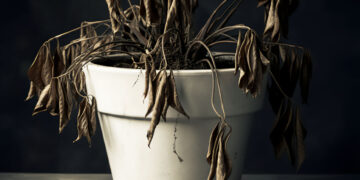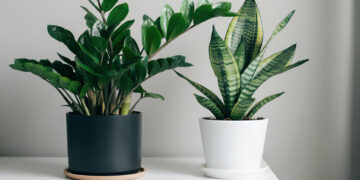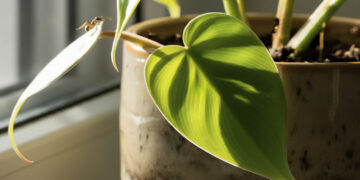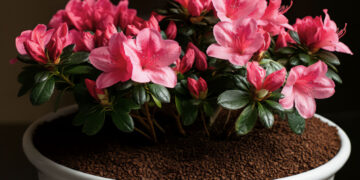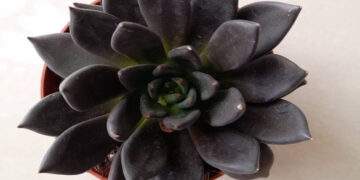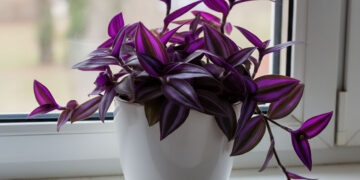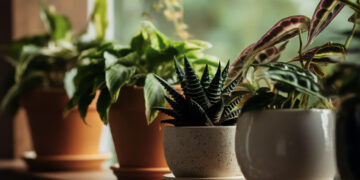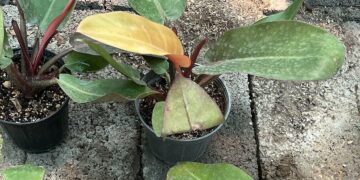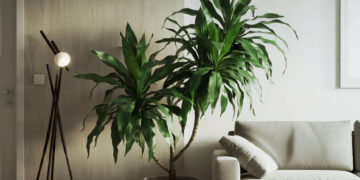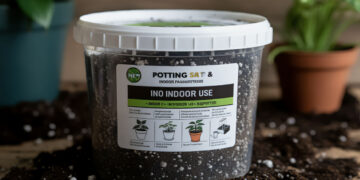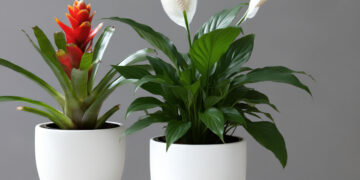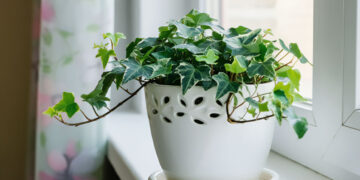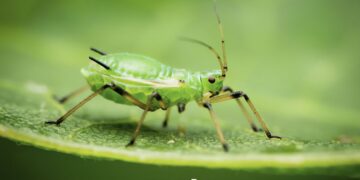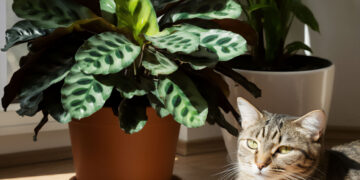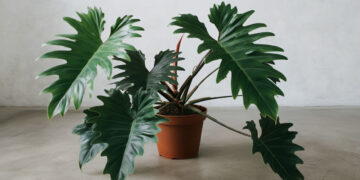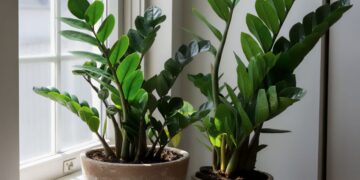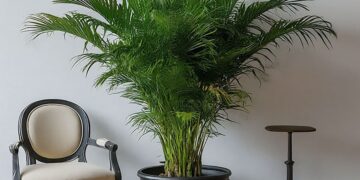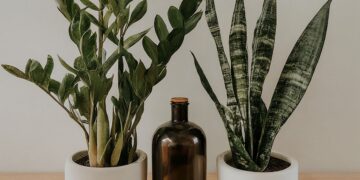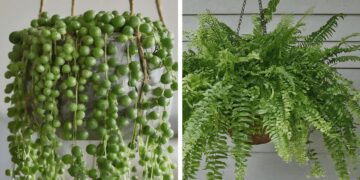Suppose you notice a pest on a houseplant when cleaning its leaves. The first and most important task is to separate the houseplant so that the pests do not transfer to other houseplants. Then, identify the type of pest and treat it accordingly.
Common houseplant pests and ways to deal with them
Scale Insects
Scale insects are mostly oval or circular in shape and have a protective shell on their bodies. They appear as small bumps on leaves and stems.
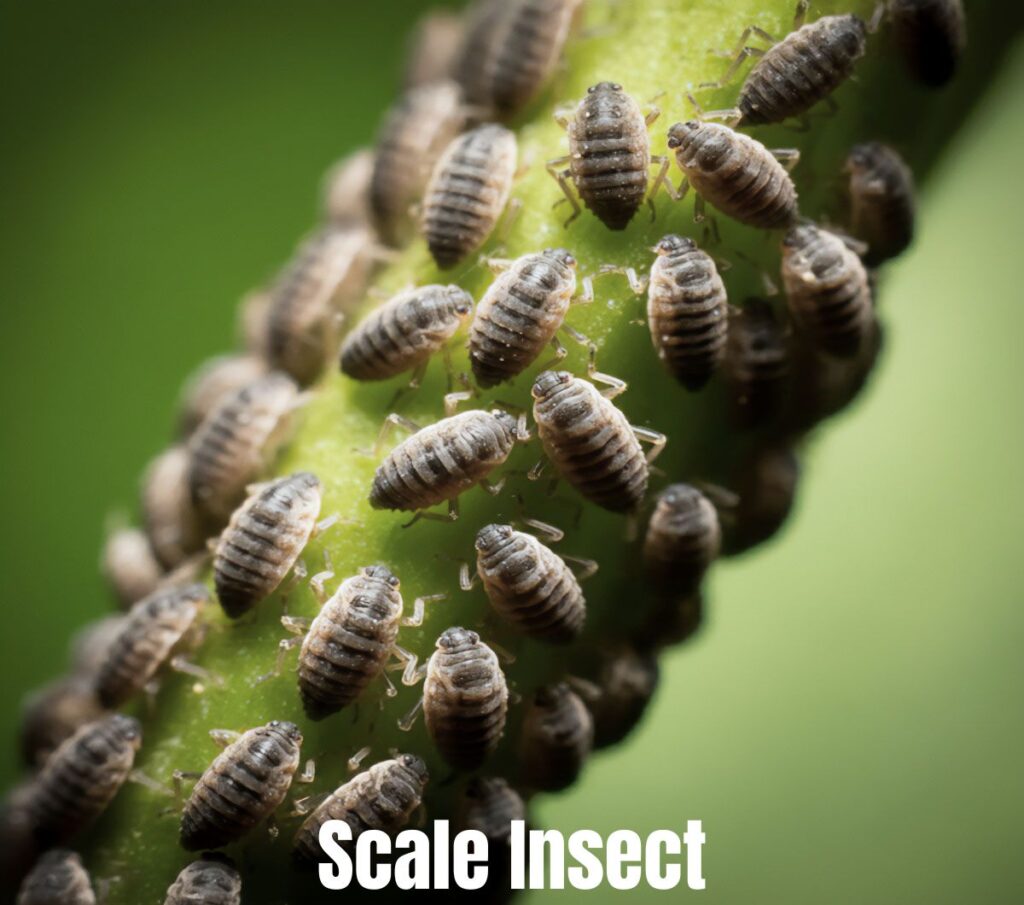
Killing these scale insects on houseplants with hard and shell-like coverings is challenging.
I usually scrape off the houseplant with a brush or soft cloth. For delicate houseplants, I use a cotton swab soaked in alcohol. Then, I apply insecticidal soap or neem oil completely to the affected area and repeat it for 7 to 10 days until it is well treated.
We prune houseplant and throw away the infected branches and leaves in severe cases.
Systemic insecticides are designed to control insects on indoor plants that have not been treated. When using them, you must follow safety precautions. However, use them only as a last resort, as they can be toxic to children and pets when used indoors.
Fungus Gnats
They are dark in color and look like tiny mosquitoes, about 2 to 4 millimeters long.
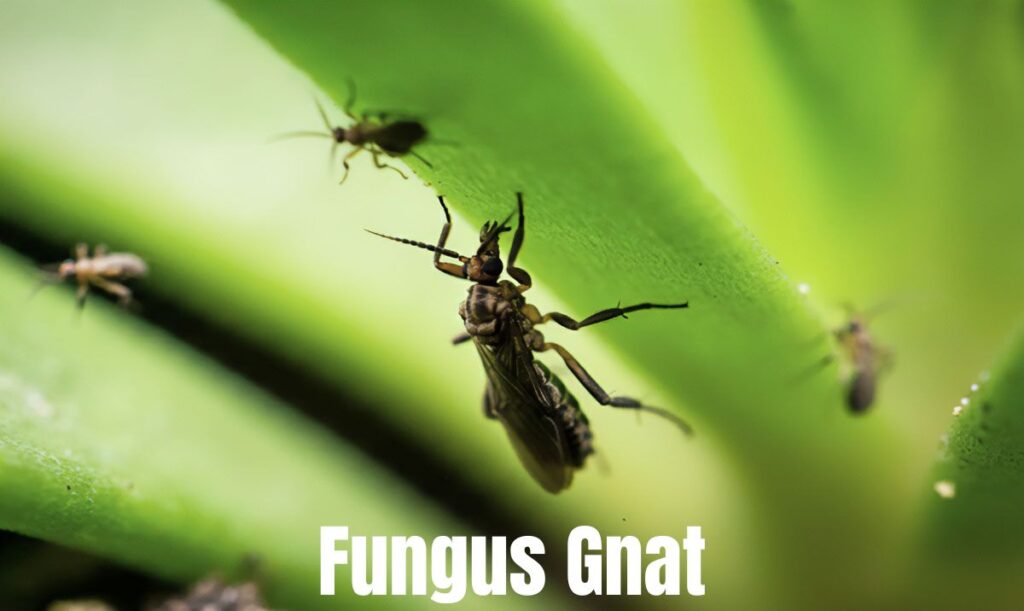
Moist soil is a good place for fungus gnats to grow.
It would be best to allow the topsoil to dry out between waterings. Moreover, diluted hydrogen peroxide is applied to the soil for houseplants to kill larvae or to control the population naturally with nematodes. (Dilute the 3% hydrogen peroxide solution with water at a 1:4 ratio)
There are yellow sticky traps on the market that adult gnats in houseplants stick to, helping us monitor and kill them.
Thrips
They have thin, long bodies and are very small, about 1 to 2 millimeters.
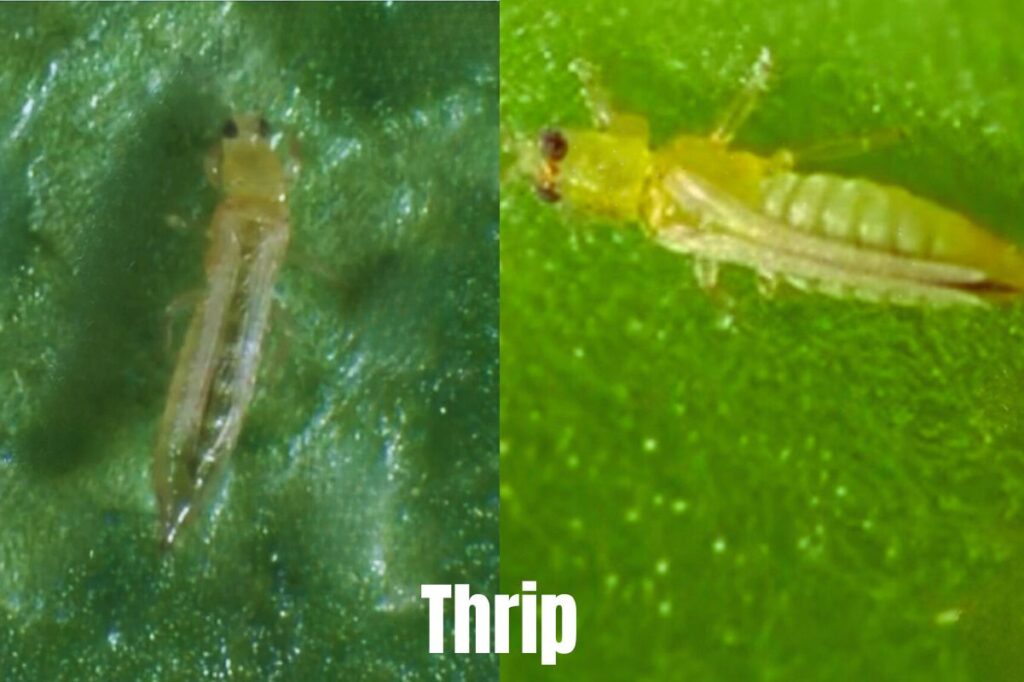
Thrips on houseplants are dangerous insects that you need to get rid of quickly.
My advice is to remove the infected leaves and throw them away.
Put blue sticky traps near houseplants to catch mature thrips.
Spray insecticidal soap or neem oil on the entire houseplant, especially under the leaves, because Most thrips hide in this area. Repeat this 7 to 10 times.
Beneficial insects such as predatory mites or lacewings can also help you control the population of thrips.
Spider Mites
They are very small, about 1 millimeter in size, and you see them as tiny moving dots.
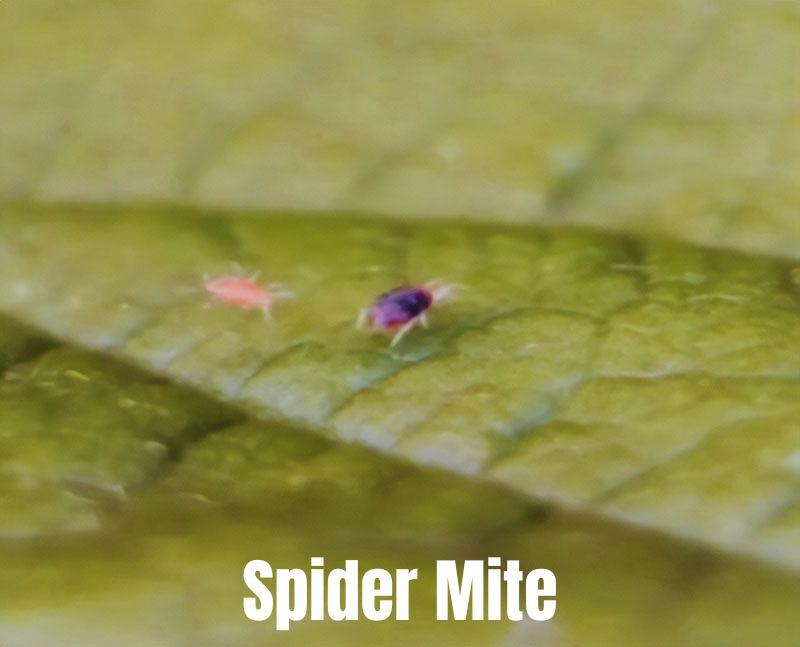
When the conditions are dry, spider mites are found on houseplants and cause severe damage.
Apply more neem oil or insecticidal soap to the whole indoor plant and the bottom surface of the leaves.
Some experts recommend increasing humidity, and while it’s good advice, I don’t suggest it because humidity itself can lead to other issues like mold or fungal infections.
Aphids and Mealybugs
Aphids are mostly green with pear-shaped bodies and long antennae, and they are often found under leaves and Mealybugs are white in color and appear in clusters, giving them a cotton-like appearance when they are together.
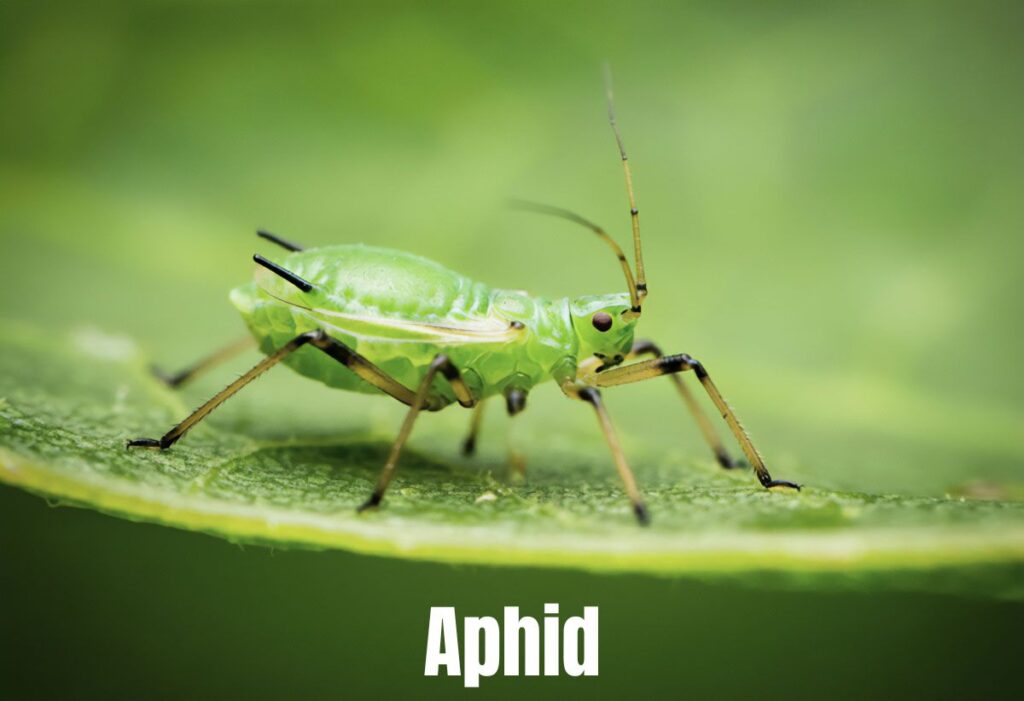
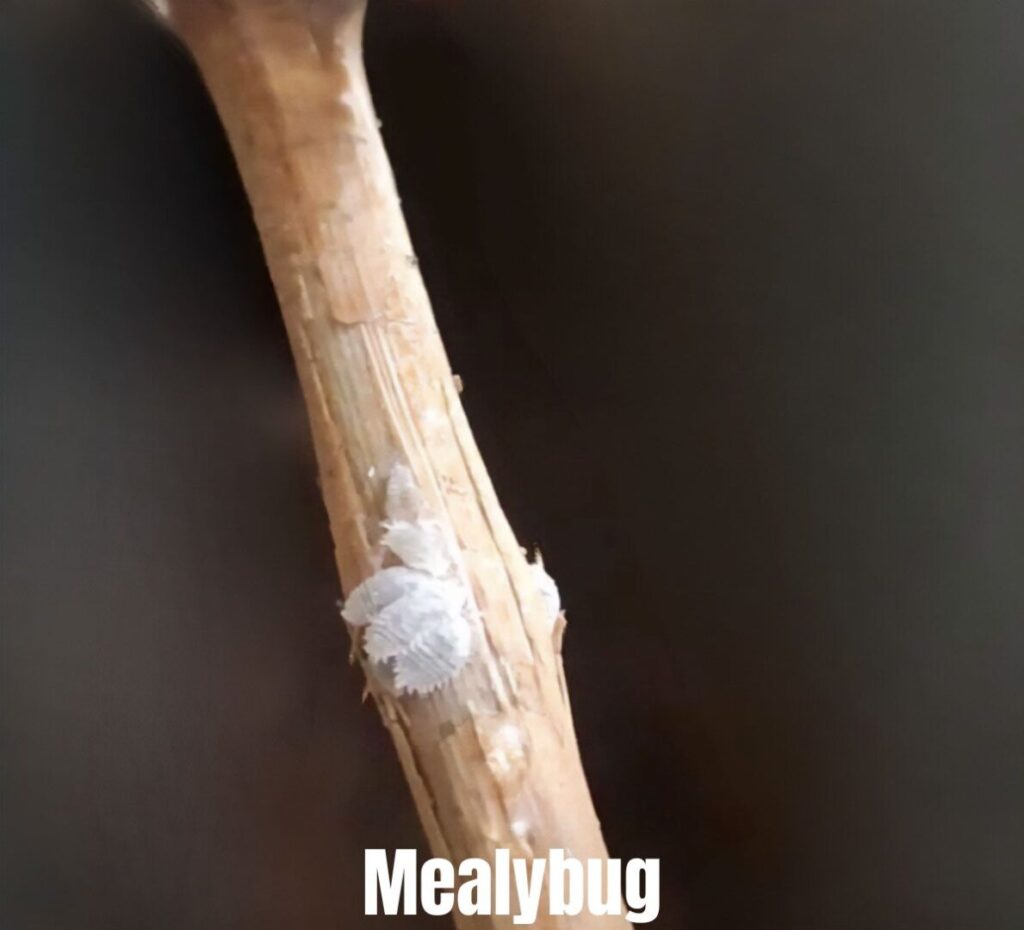
As soon as we saw one of these uninvited guests around your houseplant, I gently removed or washed the visible insects from the houseplants and sprayed insecticidal soap or neem oil directly on the pests. In this way, the pests could no longer feed and reproduce.
Obviously, useful insects such as ladybugs, which naturally hunt pests and help control their population, can also be used. This approach, of course, has its own challenges and is generally practical only if you have a greenhouse or outdoor space.
Tip: It’s better not to use neem oil on young leaves and houseplants that require direct sunlight.
Reasons for pest attacks on houseplants
After spending several exciting years with green friends, if the houseplant is stressed and in inappropriate conditions, it will attract pests.
– Maintain balance in watering houseplants and use well-drained soil. Both under-watering and over-watering are dangerous and attract harmful pests.
– Another factor that is both dangerous to lack and too much is air humidity. Creating an environment with proper humidity protects the houseplant against spider mites and mold or fungus gnat problems.
– Mold and mildew prefer Poor Air Circulation, especially when it is humid. Avoid these situations.
– Clean the houseplant leaves regularly and remove the waste and fallen debris that host pests.
– If you buy a new houseplant, keep it away from other houseplants for the first few weeks to ensure it doesn’t carry pests and is not dangerous to them.
– Be careful that the houseplant, with the best fertilizer for houseplants, has the necessary nutrients to fight the pests. A houseplant that is not fed well becomes weak and cannot keep pests away.
Tip: If you follow the above and use a gentle spray of neem oil as a deterrent, I assure you that your lush houseplant will never be infected again.
Emergency plan for infected houseplant
So far, we have tried our best to cure the infested houseplant and bring it back to life, but if the pests were more powerful and its leaves and health were damaged, unfortunately, you have to say goodbye to it. By throwing away the severely damaged houseplant, the spread of pests will be prevented, and the rest of your indoor plants will remain safe.
I tried to explain it simply and briefly, but if you have any questions about houseplant pests, feel free to ask me in the comments.
sources:
